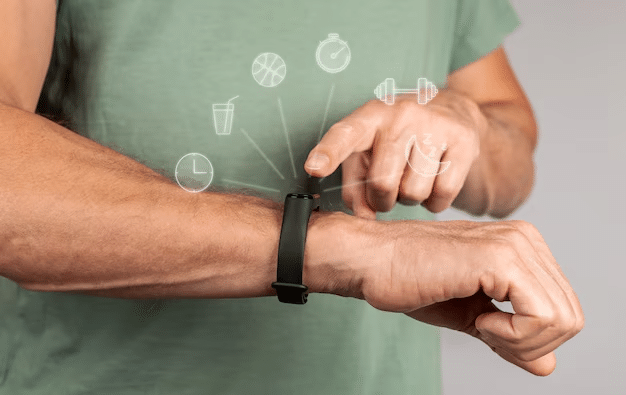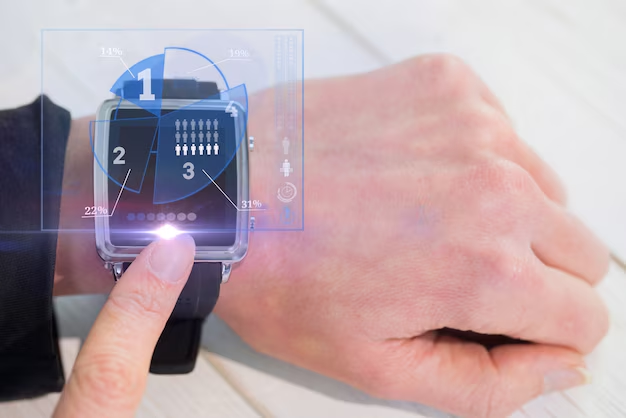Wearable technology has transformed how we interact with the digital world. From smartwatches to fitness trackers and augmented reality glasses, wearables have become integral to our daily lives. Their ability to provide real-time data, improve health, and enhance convenience is driving their adoption across industries. However, as wearable tech becomes more sophisticated, it also faces significant challenges. This article delves into the benefits and challenges of wearable technology, highlighting its potential and limitations as we move into a more connected future.
What is Wearable Technology?
Wearable technology refers to electronic devices worn on the body, designed to collect, process, and analyze data in real-time. These devices often integrate with smartphones, apps, or cloud platforms, enabling users to monitor fitness, health, productivity, and more. Common examples include:
- Smartwatches (e.g., Apple Watch, Samsung Galaxy Watch).
- Fitness Trackers (e.g., Fitbit, Garmin).
- Smart Glasses (e.g., Google Glass, Meta AR).
- Wearable Health Devices (e.g., glucose monitors, ECG patches).
- Clothing with Sensors (e.g., smart shirts, smart shoes).
The wearable tech market is rapidly growing, with innovations expanding its use cases in healthcare, sports, communication, and workplace productivity.
Benefits of Wearable Technology
1. Health and Fitness Monitoring
One of the most significant benefits of wearable tech is its ability to monitor health metrics. Devices like smartwatches and fitness trackers measure:
- Heart rate and blood pressure.
- Step counts and activity levels.
- Sleep patterns.
- Calorie tracking and workout analysis.
For individuals with chronic conditions, wearables can offer real-time monitoring, alerting users and medical professionals about irregularities. Devices like continuous glucose monitors (CGMs) provide diabetics with non-invasive, constant blood sugar readings, improving disease management.
Example: Smartwatches now feature ECG capabilities, which can detect arrhythmias and notify users to seek medical attention.
2. Enhanced Productivity
Wearables like smart glasses and augmented reality (AR) headsets have revolutionized workplace productivity by providing hands-free access to information. In industrial settings, AR glasses enable workers to visualize instructions, troubleshoot machinery, or communicate with remote experts.
Example: Technicians in the automotive or aerospace industries use AR headsets to view schematics or step-by-step repair guides without pausing their tasks.
3. Improved Communication and Accessibility

Wearables enable seamless communication. Smartwatches allow users to make calls, send messages, and receive notifications without reaching for their phones. Devices designed for individuals with disabilities, such as vibration-based wearables for the hearing impaired, enhance accessibility and independence.
Example: Wearables with voice assistants like Siri or Alexa integrate with smart home devices, offering voice-controlled convenience.
4. Personalized User Experience
Wearable technology tailors experiences based on individual needs. By collecting data over time, wearables can predict preferences and optimize recommendations, from fitness plans to sleep routines.
Example: AI-powered wearables analyze user behavior to suggest workouts, diet changes, or stress-reducing activities.
5. Entertainment and Gaming
Wearables are redefining the entertainment and gaming industries. Virtual reality (VR) headsets and AR devices deliver immersive experiences, allowing users to explore digital environments, play interactive games, or participate in virtual events.
Example: Devices like the Meta Quest VR headset let users dive into virtual worlds for gaming, fitness, or social interaction.
Challenges of Wearable Technology
1. Data Privacy and Security Risks
Wearables collect vast amounts of sensitive data, including health metrics, location, and personal habits. Without robust encryption and security protocols, this data is vulnerable to breaches, unauthorized access, or misuse.
Example: Hackers targeting a fitness app could potentially access users’ location history or medical information.
2. High Costs
Many wearable devices are expensive, limiting accessibility for some users. Advanced medical wearables or AR glasses can cost hundreds or thousands of dollars, creating a digital divide in access to technology.
Example: While basic fitness trackers are affordable, high-end devices with advanced features like ECG monitoring or AR capabilities remain out of reach for many.
3. Battery Life and Durability
Wearable devices often face limitations in battery life, requiring frequent charging. For users engaging in extended activities, such as multi-day hikes or marathons, this can be a significant drawback. Additionally, wearables must be durable enough to withstand water, sweat, and daily wear-and-tear.
Example: Users of smartwatches often complain about needing to charge them daily, while fitness trackers with longer battery lives may sacrifice features.
4. Over-reliance on Technology
The constant presence of wearables can lead to over-reliance, where users become excessively dependent on devices for tracking health or productivity. This may lead to reduced self-awareness or unnecessary anxiety over minor data fluctuations.
Example: A user seeing an irregular heart rate reading might experience unnecessary stress, even if the data reflects a non-critical situation.
5. Interoperability and Compatibility Issues
Wearable devices are often designed to work best within specific ecosystems (e.g., Apple devices with Apple Watch), limiting cross-platform compatibility. This can frustrate users who use a mix of devices from different brands.
Example: A user with an Android smartphone may face limited functionality when pairing it with an Apple Watch.
The Future of Wearable Technology
The future of wearable technology is exciting, with ongoing innovations addressing current challenges and unlocking new possibilities:
- Healthcare Innovations: Wearables will play a more significant role in disease prevention, remote patient monitoring, and telemedicine. Devices capable of monitoring blood pressure, oxygen levels, or even detecting diseases early will become commonplace.
- Smart Clothing: Advances in fabric technology will lead to wearables seamlessly integrated into clothing, such as shirts that monitor vital signs or shoes that track gait and posture.
- AI Integration: AI-powered wearables will deliver more accurate insights, predictive analytics, and real-time recommendations, further personalizing user experiences.
- Extended Reality (XR): AR and VR wearables will transform how we work, learn, and socialize, offering immersive digital experiences.
- Sustainability: As environmental concerns grow, wearables will adopt eco-friendly materials and energy-efficient designs, including solar-powered devices.
Conclusion
The rise of wearable technology marks a pivotal moment in how we interact with technology and manage our lives. With benefits ranging from health monitoring to improved productivity and entertainment, wearables have the potential to enhance daily living and revolutionize industries. However, addressing challenges such as data privacy, cost, and interoperability is essential to ensure equitable and secure access for all users. As technology evolves, wearables will continue to blur the lines between the digital and physical worlds, ushering in a more connected, personalized, and innovative future.
FAQs
1. What are some common uses of wearable technology?
Wearables are used for health monitoring, fitness tracking, communication, entertainment, and workplace productivity. Advanced devices also assist in medical diagnostics and augmented reality experiences.
2. Are wearable devices secure?
While wearable devices offer convenience, they also pose privacy risks. It is essential to use devices with robust encryption and follow best practices, such as regularly updating software and using strong passwords.
3. How do wearables improve health and fitness?
Wearables track metrics like heart rate, steps, calories burned, and sleep patterns, helping users set goals and monitor progress. They also provide insights for early detection of health issues.
4. What is the role of AI in wearable technology?
AI enhances wearables by analyzing data, providing personalized recommendations, and enabling predictive capabilities for fitness, health, and productivity.
5. What challenges do wearable devices face in adoption?
Wearables face challenges such as high costs, short battery life, data privacy concerns, and compatibility issues across platforms.


